Water Puppet Theatre in Hanoi
The world-famous Thang Long Water Puppet Theatre in Hanoi has its roots in an art form that dates back to the 11th century. The tradition of water puppet theatre stems from a time when rice paddy fields were flooded and villagers would make entertainment by standing in the waist-deep water with the puppets performing over the water. Using large rods to support the puppets it appeared as if they were moving across the water with the puppeteers hidden behind a screen.
This tradition is unique to North Vietnam but has recently found fame on stages all over the world; so it’s a rare treat to see the puppets perform in their original location at the Thang Long Water Puppet Theatre. Performances are accompanied by a Vietnamese orchestra playing traditional music using drums, wooden bells, horns, bamboo flutes and cymbals. There are also authentic Vietnamese operatic songs telling the story that is being acted out by the puppets. Most of the shows recount Vietnamese folk tales and legends with topics including the celebration of the rice harvest depicted in a humorous fashion.
Water Puppet Theatre Highlights
Shows at this modern theatre are performed in a pool of water as the stage for the puppets. The puppets are controlled by no more than eight puppeteers hiding behind a bamboo screen. The renowned Thang Long Water Puppet show is considered to be one of the cultural highlights of Northern Vietnam dating back to a tradition that first started in the Red River Delta. Today’s performances usually include a number of short sketches rather than one long story, taking the audience on a journey of ancient village life, agricultural harvests and dances of mythical creatures. Most shows also feature the famous Legend of the Restored Sword of King Le which tells the tale of Hoan Kiem Lake and the giant tortoise. The live music plays an integral part of the show with singers often shouting words of encouragement to the puppets.
Water Puppet Theatre
Thang Long Water Puppet Theatre is one of the most popular tourist attractions in Hanoi with tickets selling out well in advance so it’s worth booking yours as soon as you arrive in town. It is also advisable to pay more to get closer to the action as the theatre seats a few hundred people and the puppets are not that big. The theatre is modern and usually shows 17 short sketches within a one-hour performance. Aside from the general admission fee of VND 100,000, there’s an additional camera or video fee if you wish to photograph or film the show.
Maison Centrale in Hanoi – ‘Hanoi Hilton’
Maison Centrale in Hanoi, also known as Hoa Lo Prison and the ‘Hanoi Hilton’ housed Vietnamese revolutionaries and American POW during the Vietnam War. The fortress was once a vast colonial-style prison, most of which was torn down in the 1990s. Visiting today you will find the small southern section resting alongside a hotel and office complex. The prison is still a popular tourist attraction for those on the war history trail. Official records claim inmates numbered in their hundreds although it was not unknown for up to 2,000 prisoners to be crammed into a space reserved for 600 inmates. Around 200-300 inmates were captured American pilots brought to Maison Centrale for interrogation and torture, it was the American prisoners who sarcastically gave the jail its nickname ‘Hanoi Hilton’. Hoa Lo Prison today portrays a different side of the horror stories told by former inmates despite the prominently displayed shackles hanging on the walls. Much of the emphasis is on the Vietnamese revolutionaries some of whom were executed at the prison. The American POWs have well documented their own experiences, little of which is available at Maison Centrale today.
Hanoi’s Maison Centrale Highlights
Situated in the centre of Hanoi close to the French Quarter, Maison Centrale was French built for housing Vietnamese political campaigners for independence and was completed in 1913. These campaigners were captured and usually shackled to the floor where they could easily be beaten by guards. Vietnamese prisoners were also executed here by use of a guillotine which today is displayed near the prisons infamous death row. The prison was later used for American POWs, usually pilots caught when their planes went down. Today there is little evidence of the time spent here by the former American inmates although a great deal has been written by the survivors including their experiences in the much feared ‘blue room’. The blue room was used for the interrogation and torture of new prisoners and visitors can still see the room today although there is nothing on display here of the horror stories told by American POW’s which included former American presidential nominee John McCain.
Maison Centrale in Hanoi
Maison Centrale is accessed via a gate on Hoa Lo Street with the sign Maison Centrale at the entrance. A taxi is the easiest way to get to the prison which is located at the right corner of Phi Ha Ba Trung on the edge of the French Quarter. You can easily combine this visit with a trip to Hoan Kiem Lake which is nearby.
Hanoi Opera House
The beautiful Hanoi Opera House was built in 1911 by the then ruling French. It’s a phenomenal piece of neo-classical French architecture featuring Gothic themes on the doors and domes with pillars, shuttered windows, balconies and a glass room. Musicians, actors and dancers play to a 600-strong audience delivering powerful operatic and classical performances, making it a very popular theatrical attraction. The Hanoi Opera House is the biggest theatre in Vietnam and speaks volumes as historical and cultural evidence of Vietnam under French rule. The interior is even more magnificent than the exterior with many arguing it is aesthetically even more appealing than the Paris Opera House. Visitors today will be entertained at this architectural landmark which features a range of events including local Vietnamese opera, traditional folk music, ballets and many international concerts.
Hanoi Opera House Highlights
Following the end of the August Revolution in 1945, The Hanoi Opera House reverted from entertaining the French elite to becoming the centre of major historical events including the first session of the National Assembly of the Republic. The Hanoi building went into a state of decline prior to being renovated and brought up to date in 1997 which included the installation of state-of-the-art equipment and the renewal of some of the interior decorations. These improvements returned the opera house to its former glory which now sees international artists including violinist Hilary Hahn and pianist Wolfgang Glemser take to the stage in addition to home-grown talent. Vietnamese entertainers perform songs, classical music, dance, drama and contemporary performances from superstars such as singer My Linh. The Hanoi Opera House offers a superb setting in which to see any live show. The stage is three metres high and there are three storeys in total so a wonderful experience is guaranteed regardless of your seating arrangements.
Good to Know about Hanoi Opera House
The Hanoi Opera House is located near Hoan Kiem Lake on August Revolution Square. There are superb views of the opera house at the Hilton Opera House hotel which is very close by. You will need to purchase tickets to see the inside of the opera house although there are usually a host of concerts to choose from including drama, ballet and symphonies in addition to opera. The Hanoi Opera House is also the first choice for international meetings and conferences so check online when you are visiting to ensure a performance is scheduled.
The Vietnam Women’s Museum in Hanoi
The Vietnam Women’s Museum delivers a beautifully presented tribute to the women of Vietnam across the ages. There are plenty of historical contexts alongside a wealth of information on today’s more modern Vietnamese woman. The museum is run by The Women’s Union of Vietnam which is recognised as one of the country’s most powerful movements. Most Booked HOTELSRating Sofitel Legend Metropole Hanoi 4.8/ 5 Hoi An Silk Marina Resort & Spa 4.5/ 5 InterContinental Hanoi Westlake 4.4/ 5 Rex Hotel 4.3/ 5 Vinpearl Da Nang Resort & Villas 4.5/ 5 Furama Resort Danang 4.4/ 5 Hyatt Regency Danang Resort and Spa 4.3/ 5 EdenStar Saigon Hotel 4.3/ 5 New World Saigon Hotel 4.2/ 5 A La Carte Da Nang Beach 4.2/ 5 Most Booked TOURS Small-Group Halong Bay Day Cruise Small-Group Saigon Night Tour & Dinner Cruise Local Flavors Food Walking Tour Small-Group Full-Day Mekong Delta Cruise Small-Group Half-Day Tour of Cu Chi Tunnels Half-Day Cu Chi Tunnels Tour Mekong Delta, My Tho & Ben Tre Tour Halong Bay Full-Day Boat Cruise Cu Chi Tunnels Excursion Small-Group Half-Day Ho Chi Minh City Tour Inside the museum there is lots of narrative as women of the rice paddy fields, service workers, street vendors, female business leaders, academics and mothers are all well represented. Additionally there is plenty of information on everyday life including marriage, family life, fashion and life changing rituals. Interestingly, there are also exhibits on the part women played in Vietnam’s wars. Displays are very well presented in a storytelling format with signs also in English and French. Historic documentation including Taoist books of the Dao people and wedding cards from the Kinh community will give visitors an in-depth insight into better understanding the women of Vietnam. Photographs and film footage documenting the life of heroic mothers during wartime are moving exhibits that should not be missed.
Vietnam Women’s Museum Highlights
Hanoi’s Vietnam Women’s Museum features displays across five floors delivered over three sections – women in family, women in history and women’s fashions. There are more than 1,000 artefacts on display depicting the many faces and changing roles of Vietnamese women. The Women in History section showcases: Vietnamese women from 1930-1954, Southern and then Northern Women from 1954-1975, Unification, Vietnam’s Heroic Mothers and Portraits of Contemporary Women. Fascinating exhibits include a wooden tray that a female leader of the Indochina Communist Party once used to print propaganda leaflets in Long An from 1936-1939. The fashion section is full of jewellery and skilfully crafted clothing, including batik and woven garments.
Vietnam Women’s Museum
Visitors to the fashion floor can observe the earrings of ethnic Mong women and bracelets worn by Cotu women. In addition to the permanent displays, there are also regular special exhibitions at the museum which often tackle hard-hitting contemporary women’s issues such as human trafficking.
One Pillar Pagoda in Hanoi
Rising from one pillar in the centre of an elegantly square shaped lotus pond, The One Pillar Pagoda is said to represent a lotus flower growing up out of the water. Built between the years of 1028 and1054 during the reign of Emperor Ly Thai Tong of the Ly Dynasty, the One Pillar Pagoda is one of Vietnam’s most iconic temples.
The little temple is constructed from wood based on a single stone pillar crafted into the shape of a lotus blossom and has been rebuilt several times, most recently in 1955 when the base was destroyed during the French evacuation. The pagoda is often used as a symbol for Hanoi and remains one of the city’s most revered sights in a beautifully tranquil garden setting with benches provided for comfortable contemplation. The shrine inside the pagoda is dedicated to the Vietnamese Buddhist deity Quan Am with her effigy nestled inside the tiny three square metres temple.
Legend claims that The One Pillar Pagoda was built following a dream by the fatherless emperor in which the enlightened being Avalokiteshvara gave him a baby son resting on a lotus flower. Emperor Ly Thai Tong commissioned the pagoda to be created in resemblance of this lotus flower which is also the Buddhist symbol of enlightenment. The Emperor remained in gratitude to the bodhisattva and subsequently to to Quan Am, the Goddess of Mercy following the birth of his son. Inside the temple a richly gilded statue of Quan Am takes centre place at the main altar.
After the temple was completed loyal followers flocked daily to give thanks and support to the emperor, praying to Quan Am for a long and successful sovereignty. Today, the concrete pillar that supports the tiny wooden pagoda is a replacement for the original one which was blown up by the departing French, it remains unclear how much of the wooden temple is the original one.
Another point of interest is a bo tree that grows behind the pagoda which legend state is an offshoot of the one under which Buddha became enlightened – the tree was given as a gift from India in 1958. Before you leave the pagoda also take time to visit the Dien Huu Pagoda which is located close by in a courtyard full of exquisite bonsai trees.
Opening Hours: Entrance is free and the pagoda is open daily from 08:00-17:00 with refreshments available at a stand nearby so you can sit and relax in the surrounding gardens.
Location: The One Pillar Pagoda is situated in the park behind the museum near Ba Dinh Square at Ong Ich Kiem Street in the Ba Dinh District.
Remarks: Appropriate attire should be worn if you are entering the temple; prayers take place continuously throughout the day. Praying at The One Pillar Pagoda is said to bring about blessings of fertility and health.
Ba Vi National Park near Hanoi
Ba Vi National Park is one of Vietnam’s most famous areas of outstanding natural beauty, and is centered around a three-peaked mountain jutting steeply out of the landscape. The national park offers a great escape from the city with cool fresh mountain air in a mystical atmospheric backdrop of clouds, jungle and tropical rainforest. There is also a spa resort nestled at the foot of the mountain offering a host of natural therapies in an absolutely stunning setting.
The three mountain summits are Dinh Vua which is the highest at 1,296m, Tan Vien which is 1,226m and Ngoc Hoa the smallest at 1,131m. Together they form a three humped crest which is often obscured by clouds at the highest point due to the varied climate at the park. Pilgrims and tourists alike usually make the walk to the summit of the Tan Vien peak where an 11th sacred century shrine stands in memory of the Mountain God.
There are also superb tropical forest views and vistas all the way to Hanoi to be enjoyed from this peak. The fast-flowing Da River is located on one side of the national park; there are also several streams running through the park.
Ba Vi National Park Highlights
Originally created as a hill station during the French Colonial era, Ba Vi National Park has always been an excellent source of medicinal plants for the Dao ethnic group. Walking and hiking opportunities are popular in this area of lush tropical foliage with plenty of forest trails and mountain slopes. In addition there is also a bird garden and an orchid garden, although the main attraction is the temple.
It takes about 30 minutes of hard climb to make it to the temple but you are additionally well rewarded with panoramic views of the Red River Valley and beyond. The outlook is best from April through to December when even Hanoi can be seen in the distance. The national park offers lodging at Tan Da Spa Resort where you can experience hot springs, mud baths, wet steam baths and herbal baths for individuals, couples or families. The resort is built in the style of an ancient palace and reminiscent of the houses once found in the Vietnamese northern delta region.
Ba Vi National Park
Good to Know: Ba Vi National Park takes about two hours to reach by car. The ride to the park can be a bit bumpy and it’s best avoiding the park in the rainy season when roads may be slippery – especially the hiking trails. The road leading to the summit’s car park is very steep and narrow although efforts to widen the road are on-going.
Location: 48 km west of Hanoi
Hanoi Zoo in Thu Le Park
Formerly known as Bachthao Gardens, Hanoi Zoo is home to about 800 animals with over 90 different species on exhibition, including big cats, monkeys and reptiles. The zoo is located within Thu Le Park – a welcome respite from the hustle and bustle of Hanoi central.
The park also features a lake with pedal boats for kids to enjoy and an ornamental garden for visitors.
The zoo is striving to improve facilities and expertise to bring it on par with other zoos throughout the world and is currently undergoing a conservation-and-breeding programme of animals from Vietnam and other destinations believed to be under threat. The animals on display are located throughout the park meaning you can enjoy the landscaped surroundings as you visit the zoo. There is also a fun park for kids located close by. Hanoi Zoo is located a short taxi ride northeast of the main Hanoi centre
Hanoi Zoo Highlights
Animals on display at Hanoi Zoo include a variety of native species such as the Vietnam pheasant displayed with information signs in Vietnamese, English and French. The star exhibit is Lam Nhi or ‘baby of the forest’ – a tiger who was rescued after being taken from the jungle to be sold for its skin. A local competition was held to name the tiger with over 10,000 school children submitting entries; today the celebrity tiger attracts many visitors. Other big cats on display include the Indochinese tiger, Siberian tiger and clouded leopard.
There are also plenty of monkeys including lots of gibbons swinging from ropes and tyres in a specially built monkey enclosure. Asian elephants are present on the edge of the lake and there is also a small aquarium with turtles and tropical fish. Families visiting Hanoi Zoo can take a rest in a shaded picnic area, kids will also enjoy a spin on the lake in a swan peddle boat. When you’ve finished browsing round the zoo and surrounding gardens you can stop by the souvenir store and purchase an ornamental plant such as a bonsai tree.
Hanoi Zoo
Much of the emphasis at the zoo is based on gathering knowledge rather than care for the animals so do be warned that the cages will be smaller than those you might see at other zoos. Conditions however are improving and are certainly better than some of those found at neighbouring Asian zoos.
Opening Hours: From 08:00 to 22:00
Location: On Bach Thu Le around 5km North West of the city centre

![[Tài liệu thuyết minh] Bài thuyết minh tour 6 tỉnh miền tây (Phần 3 – Kiên Giang) [Tài liệu thuyết minh] Bài thuyết minh tour 6 tỉnh miền tây (Phần 3 – Kiên Giang)](/img/300x200/khampha/)
![[Phú Yên] khám phá “ngọn núi trời đánh” Chóp Chài [Phú Yên] khám phá “ngọn núi trời đánh” Chóp Chài](/img/300x200/khampha/2017/08/nui-chop-chai-phu-yen-khamphadisan.jpg)

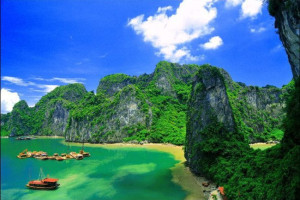

![[Thái Lan] Lộ diện top 7 địa điểm ngắm mây bao ảo tại Thái Lan [Thái Lan] Lộ diện top 7 địa điểm ngắm mây bao ảo tại Thái Lan](/img/300x200/khampha/2018/07/dia-diem-ngam-may-o-thai-lan-khamphadisan-8-e1532937907150.jpg)


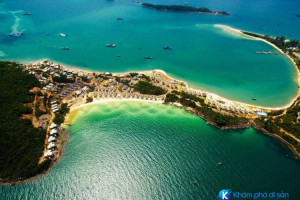
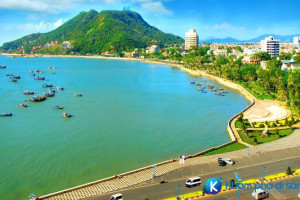
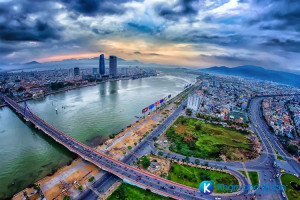


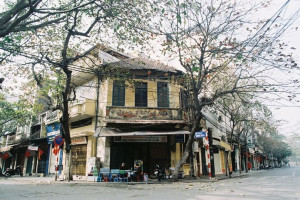
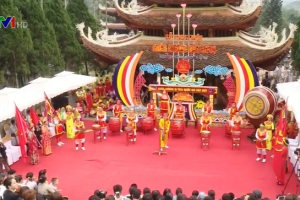
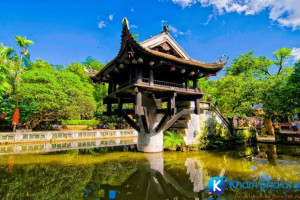






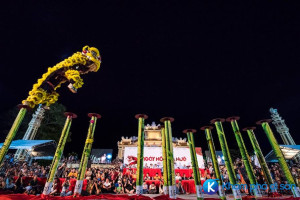
![[Video] Tour du lịch hoàng hôn trên phá Tam Giang – Công ty Du Lịch Đại Bàng [Video] Tour du lịch hoàng hôn trên phá Tam Giang – Công ty Du Lịch Đại Bàng](/img/300x200/khampha/2017/07/canh-dep-tren-pha-tam-giang-2.jpg)